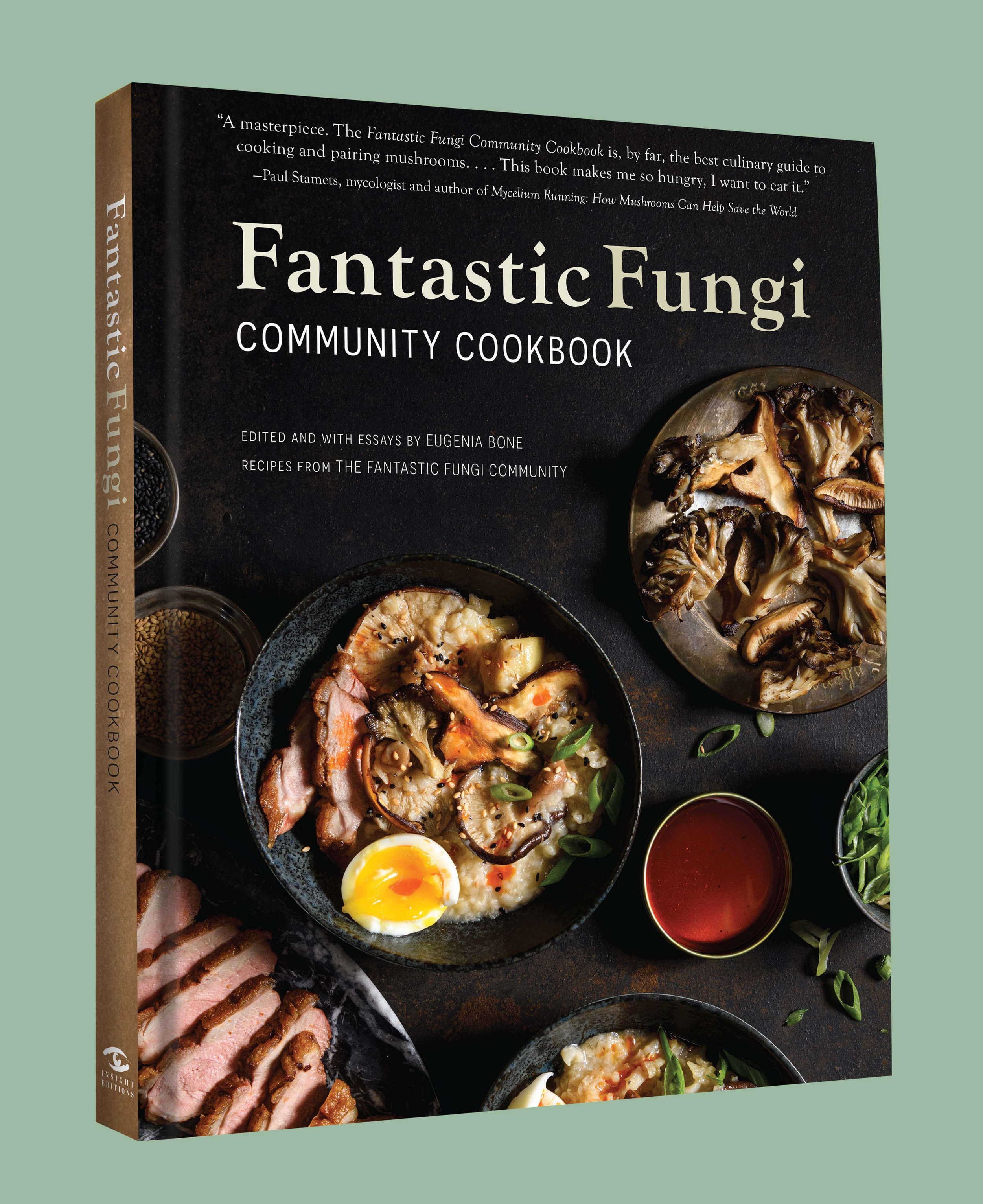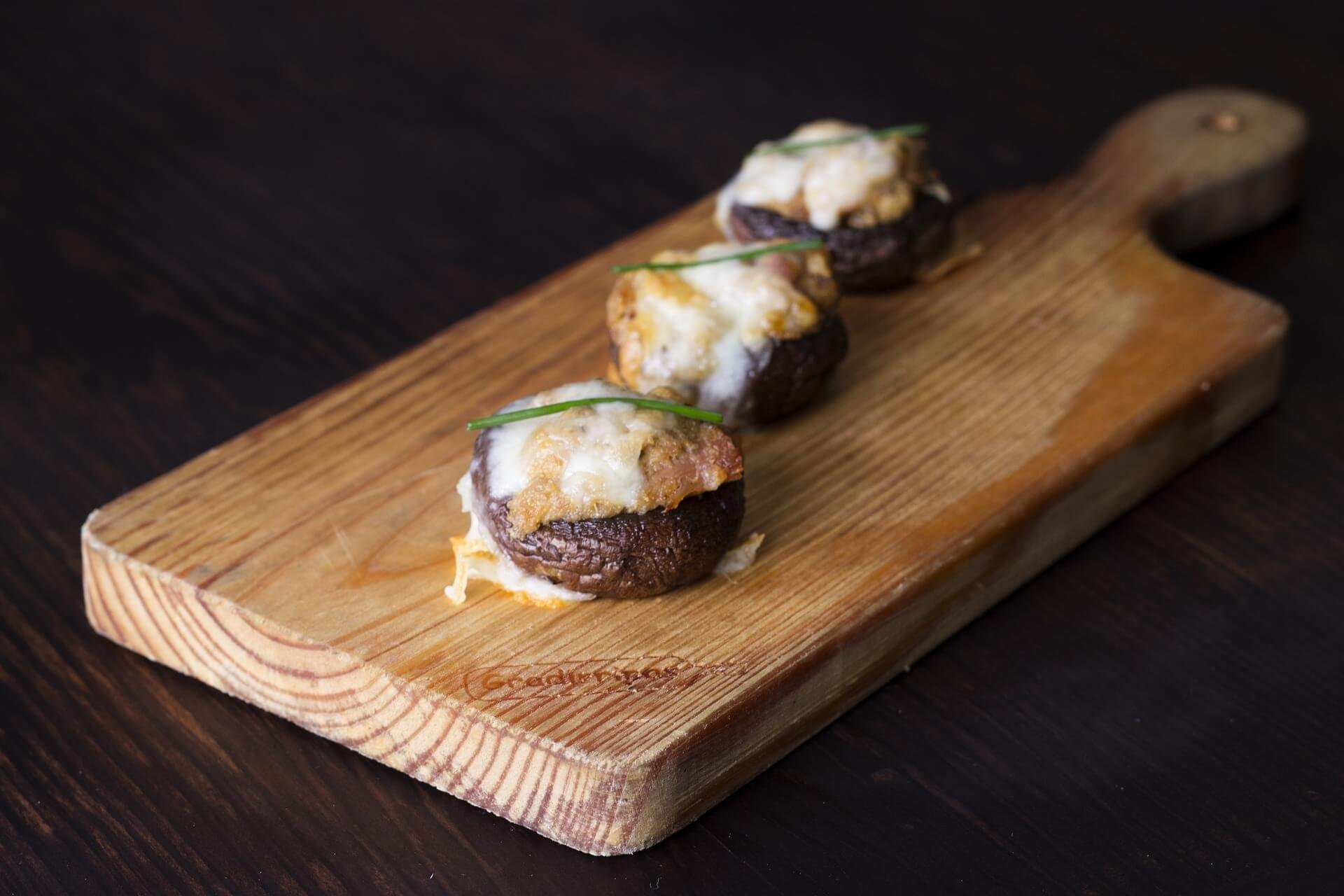The Many Reasons Why Cheese & Mushrooms Make Such a Great Pairing
When it comes to pairing, cheese lovers have a plethora of foods at their disposal: fruits fresh, dried, or preserved; cured meats; fresh or pickled veggies; condiments ranging from floral honey to puckery mustard; nuts and seeds, raw, roasted, or candied in a crackly shell. But one significant, cheese-friendly food—actually a whole biological kingdom—is often overlooked.
We should be eating mushrooms, from humble supermarket buttons to precious foraged varieties, with our cheese more often. Aside from complimentary flavors ranging from sweet to meaty to woodsy, mushrooms have more in common with our favorite cheeses than meets the eye—literally.
Both foods depend on vast, unseen networks of microbes to transform the substrate they’re growing on into something delicious. In the case of cheese, that’s cultured milk solids, while mushrooms grow on and consume dead organic matter ranging from trees to fruit to flesh.
Digging into the Mushroom Cheese Connection
“Mycology, the study of mushrooms and fungi, is like a gateway drug to microbiology,” says Eugenia Bone, journalist and author of several books on food preservation, microbiology, and mushrooms. She’s also the editor of the new Fantastic Fungi Community Cookbook, a compilation of 100 mushroom-centric recipes—several incorporating cheese—from chefs, scientists, and entrepreneurs in the world of mushrooms.
With their visible (and delicious) fruiting bodies, fungi can act as a bridge to the microscopic world we can’t see. “Mushrooms are a very effective way to start thinking about microbial ecologies—the fact that there could be an ecology as complex as an ecosystem in the Amazon happening in a cheese cave,” Bone says.
In fact, the molds that make our beloved cheeses are fungi themselves, from vivid veins of Penicillium roquefortii in hunks of blue to the fluffy yellow clouds of Chrysosporeum sulfurem known as fleur jaune that can appear on long-aged natural rinds. But their visible fruiting bodies, typically a tiny stem with a packet of spores on top, are much less complex than the mushrooms we enjoy. “When you see blue mold, you're really looking at a layer of spores attached to these little fruiting structures that are coming off the mycelium, or fungal threads, of this multicellular organism that is colonizing and consuming whatever it’s living on or in,” Bone says.
Eugenia Bone courtesy of Eugenia Bone
Umami
Apart from biological affinities, mushrooms and cheese have something else in common. Though they’re mostly water, mushrooms contain small amounts of high-quality protein, including the amino acids humans need. Those amino acids include glutamate, the substance responsible for the rich, savory taste known as umami that’s present in foods like meat, fish, tomatoes, soy sauce, and, of course, cheese.
Within that umami profile, Bone says, mushroom flavor profiles can range from sweet to musty to bitter. Traditional preparations may help balance those flavors. Edible species of russula mushrooms, for example, are salt-preserved in Russian cuisine to help cut their natural bitterness. With their distinctive scent of maple syrup, candy caps are sweet enough to be used in desserts (including recipes for poached pears and sugar cookies in Fantastic Fungi).
Ways to Pair Mushrooms & Cheese
When it comes to serving mushrooms and cheese together, a few preparations are easy go-tos. For example, baking and melting cheese and cooked mushrooms together mellow and meld their flavors.
In Pastry
The classic holiday dish brie en croûte can be made savory (and more nutritious) by slicing the cheese in half and stuffing it with sauteed mushrooms before it’s wrapped in puff pastry and baked. Make it in spring with morels, as suggested in the book, or swap in easier-to-find varieties like oysters or creminis any time of year.
With Sauce
Mushrooms and pasta or rice are another classic combination, often married together in a creamy, cheesy sauce or with a shower of hard, salty cheese. Chopped, sauteed mushrooms make a great addition to your favorite mac and cheese or risotto. Bone recommends a recipe featuring gorgonzola dolce and woodsy black trumpet mushrooms tossed with farfalle, submitted to Fantastic Fungi by California chef Michael Wood. “The combination of gorgonzola cheese and black trumpet mushrooms is like 50 shades of mustiness. It's really, really sexy,” she says.
Sauteed or Pickled
On a cheese board, Bone recommends serving warm sauteed mushrooms as you might a dish of pickles or olives to complement styles from mild, creamy fresh cheeses to whiffy washed rinds. But mushrooms can add other profiles to the party, too. Pickled shiitakes or king trumpets can add a triple punch of umami, sweetness, and acidity that balances the richness in cheese, while their pleasantly fleshy and fibrous chew offers textural contrast. (Pickling is also a great way to make use of a small harvest that would otherwise cook down to a minuscule serving, Bone says.)
Baked
But pickling isn’t the only way to preserve mushrooms for your cheese boards. Toss shiitake caps, thin-sliced king trumpets, or oyster mushrooms in olive oil and salt, then bake them in a 300-degree oven for 30 minutes to one hour or until crisp to create a savory, gluten-free chip with an umami punch. You can also cook mushrooms down with sugar into a jam-like conserve for an unexpected combination of sweet and savory. Bone prefers to do this with smaller chanterelles, known for their fruity apricot notes.
She sees cheese and mushrooms complementing each other nutritionally, not just culinarily—an important distinction as more and more diners seek more sustainable diets by limiting meat consumption.
You Complete Me, Said the Mushroom to the Cheese
With their fleshy texture and savory flavors, mushrooms can make a tasty and filling substitute for meat in recipes, but they don’t provide the same nutrients. Cheese can offer the fat and protein that mushrooms lack while enhancing their appeal. Serving a portobello burger with a slab of squeaky, savory grilled halloumi on top, Bone suggests, makes sense in terms of nutrition as well as enjoyment.
“I can't imagine a future without cheese, but I can imagine a future where consumption is more precious—there's more respect for it,” she says. “If we're showing certain respect for those products, then the idea of eating them with mushrooms is ideal. Why not have a mushroom-forward meal, and the cheese is your dessert?”
Funghi and gorgonzola pasta photo credt Evan Sung
Farfalle with Black Trumpets and Gorgonzola Sauce
By Michael Wood, California
When I first started collecting black trumpet mushrooms (Craterellus fallax) in the early 1980s, I was looking for ways to cook them that highlighted their distinctive flavor and texture. (I wrote about them in my book, California Mushrooms, and there is lots of information about black trumpets on my website, MykoWeb.com.) At that time, Fettuccine with Gorgonzola Sauce from Marvella Hazan’s great The Classic Italian Cookbook was a regular dish in my household. I thought that black trumpet mushrooms would go well with the Gorgonzola, and the resulting dish was a hit! Over the years, I have continued to try many variations of a blue cheese sauce with black trumpets and pasta—they are all good. This is one variation on that theme. Try it, but it is really hard to beat the original Hazan Gorgonzola version with freshly made fettuccine and the added black trumpets.
Farfalle with Black Trumpets and Gorgonzola Sauce Recipe
4 Servings
4 tablespoons unsalted butter, divided 2½ cups fresh black trumpet mushrooms, washed, or ½ ounce dried black trumpets, rehydrated in water and drained
8 ounces Gorgonzola dolce cheese, cubed or crumbled
½ cup milk
¼ cup grated Parmesan cheese
12 ounces farfalle or other cut pasta Salt and freshly ground black pepper
2 tablespoons chopped fresh flat-leafed parsley, for garnish (optional)
Heat 2 tablespoons of butter in a medium skillet over medium-high heat. When the butter is melted, add the black trumpets and cook until they release their liquid and the liquid evaporates about 10 minutes. Add ¼ to ½ cup of water to avoid burning the mushrooms. Set aside.
Place the cheese in a medium saucepan and heat gently over medium-low heat until it melts. Add the milk and the remaining 2 tablespoons of butter and whisk until smooth, about 10 minutes.
In the meantime, bring a large pot of salted water to a boil over high heat. Add the farfalle and cook for about 12 minutes, until the pasta is al dente. Drain and pour pasta into a serving bowl. Add Gorgonzola sauce and black trumpets and toss. Add salt and freshly ground black pepper to taste. Garnish with parsley, if you like.
Recipe reprint from Fantastic Fungi Community Cookbook by permission, Insight Editions, 2021.




